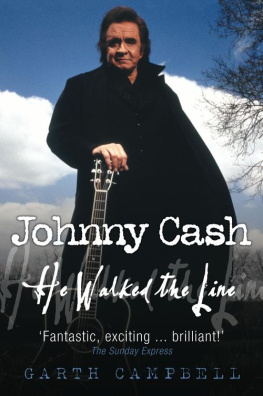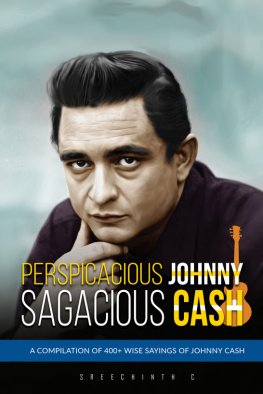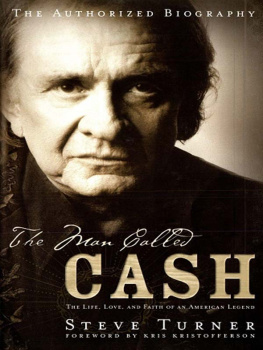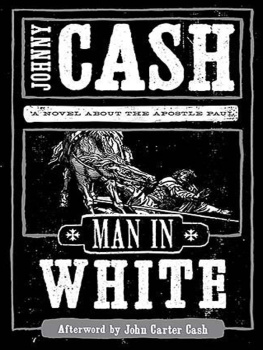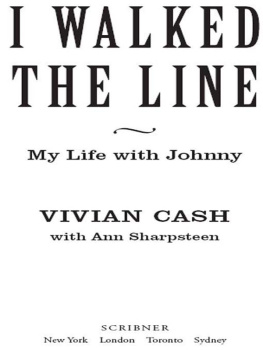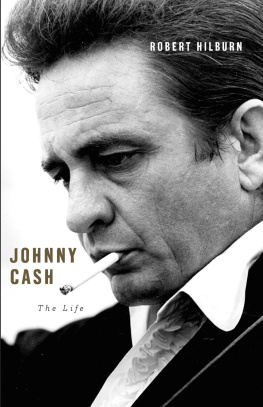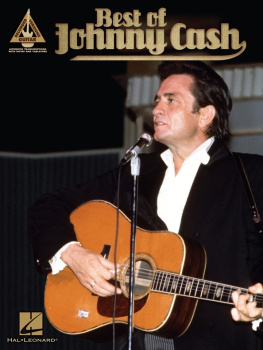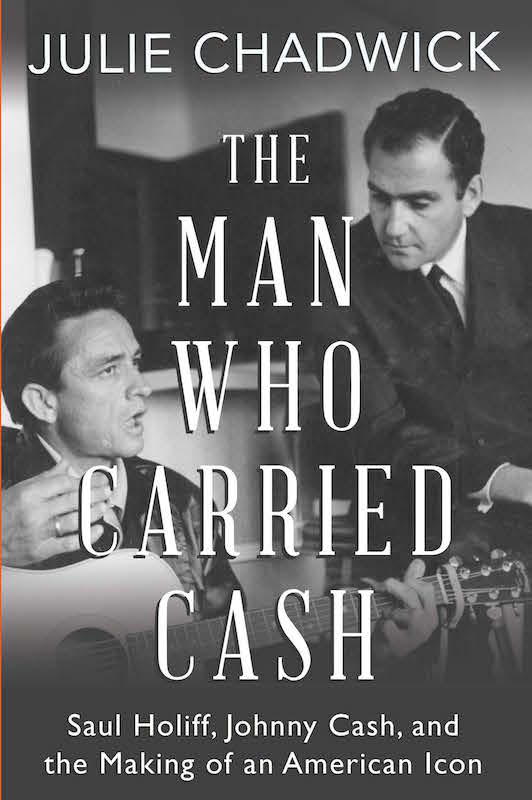1. The White Coat
2. Showbiz Had to Be My Life
4. The Singin Storyteller
5. Carnegie Hall and June Carter
6. My Career Is Zooming
7. The Flames Went Higher
8. One Hundred Percent Top Billing
9. Saul, Help Me!
10. Carrying Cash
11. The Proposal
12. The Crash
13. Camelot, Nixon, and the Fairy Tale That Wasnt
14. From Jails to Jesus
15. The Richest Man in the Cemetery
16. The Gospel Road
17. The Wisest Man I Know
18. Cinnamon Hill
INTRODUCTION
T he story of Saul Holiff and Johnny Cash first arrived in my inbox as an email with a subject line marked CONFIDENTIAL. I was a cub reporter at my hometown paper in Nanaimo, British Columbia, and had also recently been promoted to editor of our weekly entertainment section, The Hub. In journalism many a tall tale comes across ones desk, and part of the birth story of any piece begins with separating the wheat from the chaff. But unlikely as it seemed, this story was immediately compelling.
The man writing to me was Jonathan Holiff, whose father, Saul Holiff, had officially worked as Johnny Cashs manager for thirteen years. Before his death in 2005, at a time of his own choosing, as the subsequent obituary in the Globe and Mail had so eloquently put it, he had lived out his last years in Nanaimo.
Since then, Jonathan had written, produced, and directed a documentary film about his fathers life and relationship with both him and Johnny Cash, and was writing to me regarding the gala opening of the film that was about to take place in Nanaimo on his fathers home turf.
It was a story that held immediate intrigue, and in the years since, its grip on my imagination has only intensified.
Following his fathers death, Jonathan returned to Nanaimo from his home in Hollywood, where he worked in the world of celebrity endorsements as managing director of the Hollywood-Madison Group. Overcome with conflicted emotions around his fathers death, these feelings were soon exacerbated by the incessant calls of journalists who were curious about his father, as renewed interest in Cash swirled around the imminent release of the Joaquin Phoenix and Reese Witherspoon film Walk the Line . It seemed he couldnt escape the spectre of his father. In the midst of this chaos, Jonathans mother, Barbara, offered her son the key to his fathers storage locker in the hope that, by going through his belongings, it would give him some form of closure.
What it marked was the beginning of a multi-year journey of discovery for Jonathan, who, in his own words, was searching for his father in the shadow of a legend. What he found in the storage locker was a vast archive of materials his father had saved during his time as Johnny Cashs manager. As he waded through the archive, a picture began to emerge of a person he never knew who was not only his father but also Saul Holiff, a man personally possessed of a rich and troubled internal life, but who outwardly was a major figure in the history of Canadian and American music.
The result was My Father and the Man in Black , a highly personal documentary that was as much about managers and superstars as it was about fathers and sons. When the film had its hometown opening, I was assigned to write the cover feature story on it. Over time, Jonathan and I began to discuss the possibility of a book that delved even deeper into the mystery of Saul Holiff, the man, and his career as manager of one of the legendary bad boys of American music.
From the beginning, I could see that the material that Jonathan and the Holiff family had granted me access to was impressive. Saul was meticulous, a list-maker, highly organized and fastidious both in appearance and in personal habits. This was reflected in the vast quantity and quality of the records he kept. Of particular significance was a large scrapbook of the type that was built to hold newspaper broadsheets, on the front of which were a series of gold letters: L-I-F -F , as though once intended to spell out Sauls last name. Perhaps the other letters had fallen off. However, on closer inspection it could be seen that the final letter had been amended with a pen to become an E , so instead the letters read LIFE .
Herein was Sauls own collection of newspaper cuttings, letters, and photos he found personally significant, and it provided a sort of key to the other materials within the archive. There were detailed financial records, contracts, audiotaped phone calls with Cash, audio and written diaries, letters, posters, and hundreds of photos both candid and professional. Many of the recordings and diary entries were recorded within hours, weeks, or months of events, which in turn served to inform the book on an as-it-happened level.
Though fascinating and historically significant, it is also worth noting that Saul Holiff never intended for this archive to become public. In fact, up until his death he was busy with liquidating much of it; most of the gold records he had earned previously as Cashs manager had been sold or auctioned off to charity, and each year he would go down into the storage locker with a garbage bag to weed out items into the trash, with a promise to his wife that he would soon whittle it down to almost nothing. It is not known how much was lost in this process, but what survived is still considerable.
Through the years, into his retirement, Saul toyed with the idea of writing a book about the entertainment industry and the quirky personalities within it, but a tell-all memoir about his famous clients like Johnny Cash was never his intention. He wanted to write something that would have served as a sociological study from an insiders point of view. Not only was it not his style to do a tell-all, but also, as a highly private individual like many men of his generation, Saul rarely, if ever, revealed the turmoil, pain, and insecurities that lay behind his facade of refined success even to those closest to him. As such, I feel it is important to view his diaries and letters with a sense of reverence in that, though they paint a fascinating and complex portrait of a man and his tumultuous relationship with one of the most iconic figures in American music, they are also the very personal musings of a man who did not imagine that one day these thoughts would become public.
Here, it might be worth making a note on style: Much, if not all, of Sauls thoughts that I have included are written in italics, and come from Sauls own diaries or were stated in interviews. Though these are not in quotes, I attempt to stay as close to his own exact wording as possible. The scenes in the book are described as closely as possible to what factually transpired, with some minor allowances for creativity, and are based on newspaper clippings, quotes, diary entries, letters, and information from other books, but as with any scenarios based on memories, they often involve differing accounts. In some of these cases I defer to Sauls perspective and descriptions, as until this point, his story has largely gone untold.
It is also important to note that this book is not intended to be a definitive biography of Saul Holiff, or of Johnny Cash, for that matter. There are far more qualified and intrepid writers who have shouldered the task of crafting Cash biographies with skill and nuance, and will continue to carry that story far into the future. This is, rather, the tale of a relationship between two men, in friendship and in conflict, and is as much a look into the world of music during the era of the 1950s, 1960s, and 1970s on both a personal and professional level as it is a meditation on modern masculinity. Perhaps it is even a cautionary tale of sorts. What stood out for me as I researched these two mens entangled lives was that though they eventually achieved the outward success and triumph they so fervently sought, it did little to heal their internal strife. Therein lies a tragedy, but also, perhaps, a warning.



